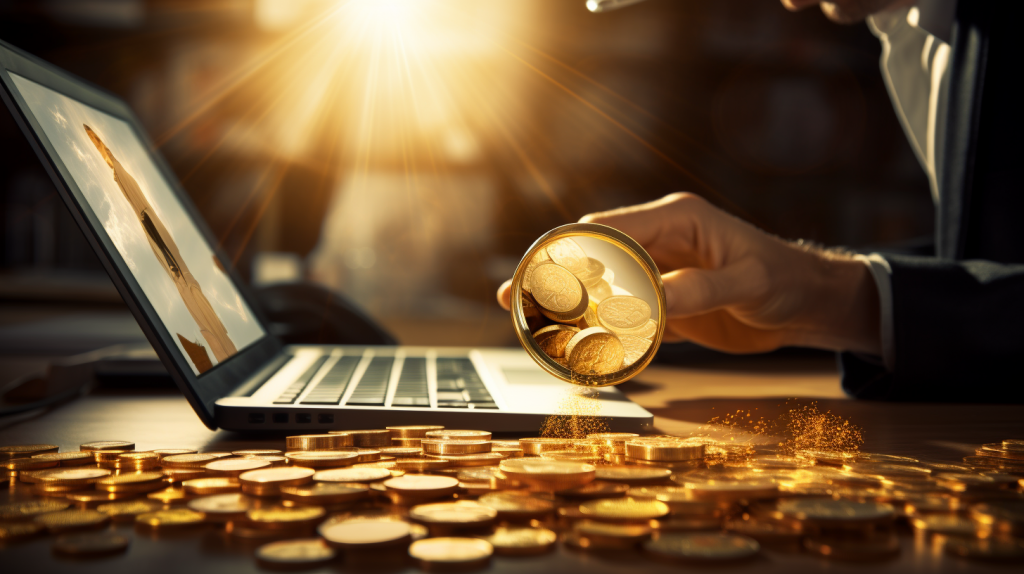
Are you considering investing in precious metals? If so, you’re not alone. Many people are turning to precious metal IRAs as a way to diversify their portfolios and protect their wealth. But with so many options out there, how do you know which companies are the best for your investment needs? That’s where top precious metal IRA reviews come in.
These reviews provide valuable insights into the world of precious metal investing, giving you an inside look at different companies, market trends, and investment options. By evaluating these reviews, you can make informed decisions about your own precious metal IRA.
In this article, we will explore what these top reviews tell us about precious metal investing and how they can help guide your investment strategy. So let’s dive in and discover the benefits of precious metal investing together!
Understanding the Benefits of Precious Metal Investing
If you’re looking to diversify your investment portfolio and protect yourself against economic downturns, then precious metal investing is definitely worth considering.
Investing in precious metals like gold, silver, platinum, and palladium can provide numerous benefits. Firstly, these metals have a long history of retaining their value over time, making them a reliable store of wealth.
Secondly, they offer protection against inflation as their value tends to rise when the purchasing power of fiat currencies declines.
Thirdly, precious metals are considered a safe haven asset during times of market volatility or geopolitical uncertainty.
Additionally, investing in precious metals through an Individual Retirement Account (IRA) offers tax advantages and allows you to include physical assets in your retirement savings.
Overall, by adding precious metals to your investment strategy, you can potentially enhance returns and safeguard your wealth for the future.
Evaluating Different Precious Metal IRA Companies
When evaluating different companies for your precious metal IRA, you’ll discover a range of options that can help you maximize your investment potential. It’s important to consider various factors before making a decision.
Look for companies with a solid reputation and experience in the industry. Read reviews from other investors to gain insights into their experiences and satisfaction levels.
Consider the fees and costs associated with each company, including storage fees and transaction fees. Additionally, evaluate the customer service provided by each company to ensure they’re responsive and helpful.
Take note of the types of metals offered by each company, as well as their buyback policy if you decide to sell your investments in the future.
By carefully evaluating these different aspects, you can make an informed choice when selecting a precious metal IRA company that aligns with your investment goals and preferences.
Analyzing Market Trends in Precious Metal Investing
Explore the ever-changing market trends in investing with precious metals and discover how you can capitalize on these opportunities to maximize your returns.
The world of precious metal investing is constantly evolving, influenced by various factors such as economic conditions, political events, and global demand.
By staying informed and analyzing these market trends, you can make well-informed decisions that lead to profitable investments.
For example, when there is a surge in demand for gold due to economic uncertainty, you may consider increasing your allocation in this precious metal to take advantage of potential price appreciation.
On the other hand, when silver prices are relatively low compared to historical averages, it could be a good time to diversify your portfolio by adding more silver holdings.
Understanding these market trends allows you to strategically position yourself for success in the precious metal investment arena.
Comparing Investment Options for Precious Metal IRAs
Comparing investment options for a Precious Metal IRA can provide valuable insights into the diverse range of opportunities available to investors looking to diversify their portfolios and secure their financial future.
With numerous options available, it’s essential to understand the pros and cons of each investment choice. Here are three key factors to consider:
- Physical bullion: Owning physical gold or silver allows you to have direct control over your investment. It provides a sense of security and serves as a tangible asset during uncertain economic times.
- ETFs and mutual funds: These investment vehicles offer convenience and liquidity. They allow you to gain exposure to precious metals without the hassle of storing physical assets, making them ideal for those seeking flexibility.
- Mining stocks: Investing in mining companies can be an attractive option for those looking for potential growth opportunities. However, it also comes with higher risks due to factors such as market volatility and company-specific risks.
By comparing these options, you can determine which one aligns best with your financial goals and risk tolerance.
Considering the Pros and Cons of Precious Metal Investing
Investing in precious metals can offer both potential gains and risks, so it’s crucial to carefully consider the pros and cons before making any decisions.
One of the main advantages of investing in precious metals is their ability to act as a hedge against inflation. When the value of paper currency decreases, the value of precious metals tends to rise.
Additionally, precious metals have a long history of retaining their value over time. They are tangible assets that can be held physically or stored securely, providing a sense of security for investors.
However, there are also some downsides to consider. Precious metal prices can be volatile, meaning they can experience significant fluctuations in value. Furthermore, investing in precious metals typically requires additional costs such as storage fees and insurance premiums.
It’s important to weigh these pros and cons carefully when deciding if precious metal investing is right for you.
Making Informed Decisions for Your Precious Metal IRA
When it comes to your Precious Metal IRA, making informed decisions is key to ensuring a secure and enjoyable investment experience. To help you navigate through the process, here are some important factors to consider:
- Research different types of precious metals and their performance in the market.
- Understand the fees associated with setting up and maintaining a precious metal IRA.
- Consider working with a reputable custodian who specializes in precious metal IRAs.
- Stay updated on market trends and economic indicators that can impact the value of your investments.
- Diversify your portfolio by including a mix of different precious metals.
By taking these steps, you can make well-informed choices for your Precious Metal IRA that align with your financial goals. Remember, knowledge is power when it comes to investing in precious metals.
Conclusion
In conclusion, investing in precious metals through a self-directed IRA can provide numerous benefits. By evaluating different companies and analyzing market trends, you can make informed decisions for your investment.
Comparing investment options allows you to choose the one that aligns with your financial goals. While there are pros and cons to consider, the potential for growth and diversification makes precious metal investing an attractive option.
So, take charge of your financial future and explore the world of precious metal IRAs today!…

